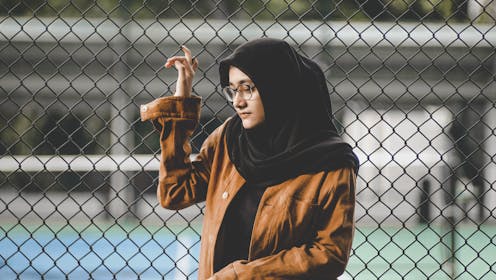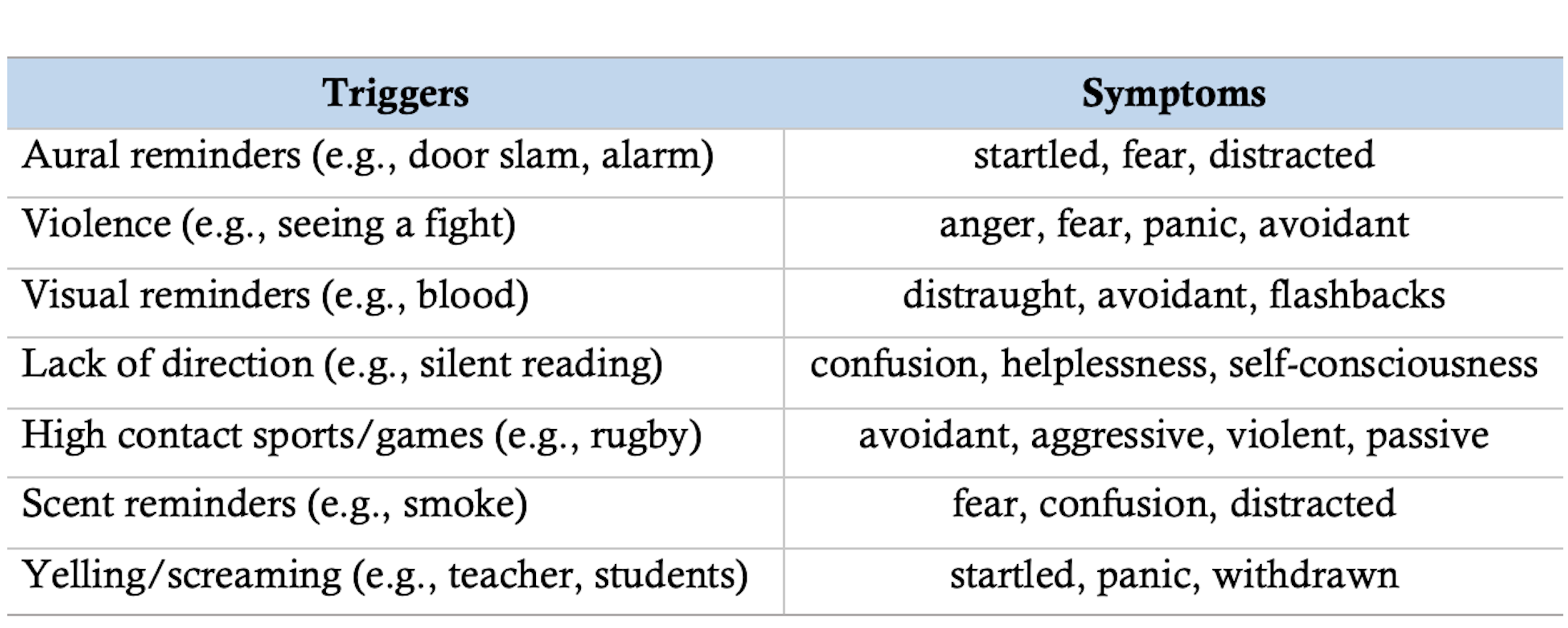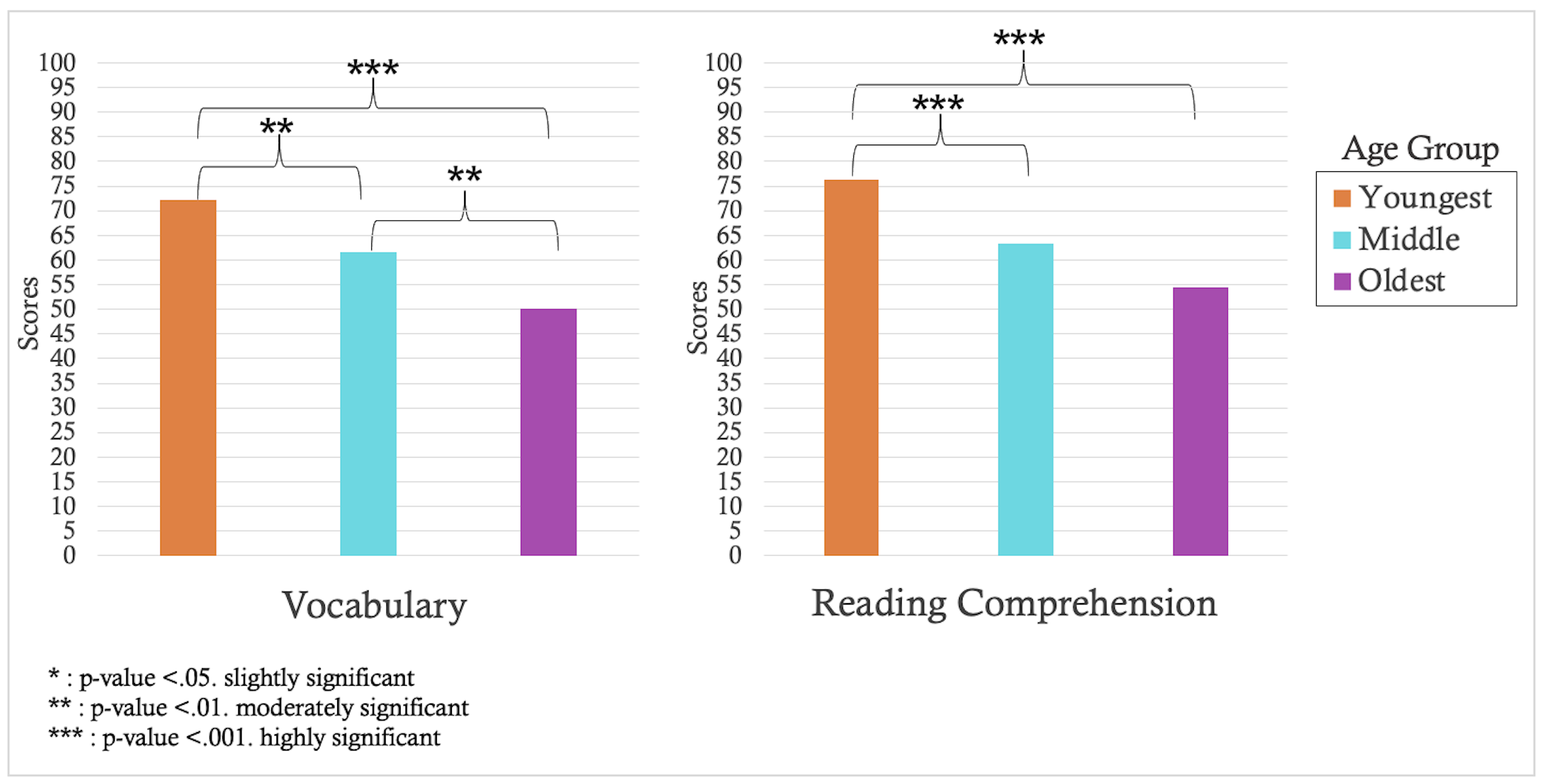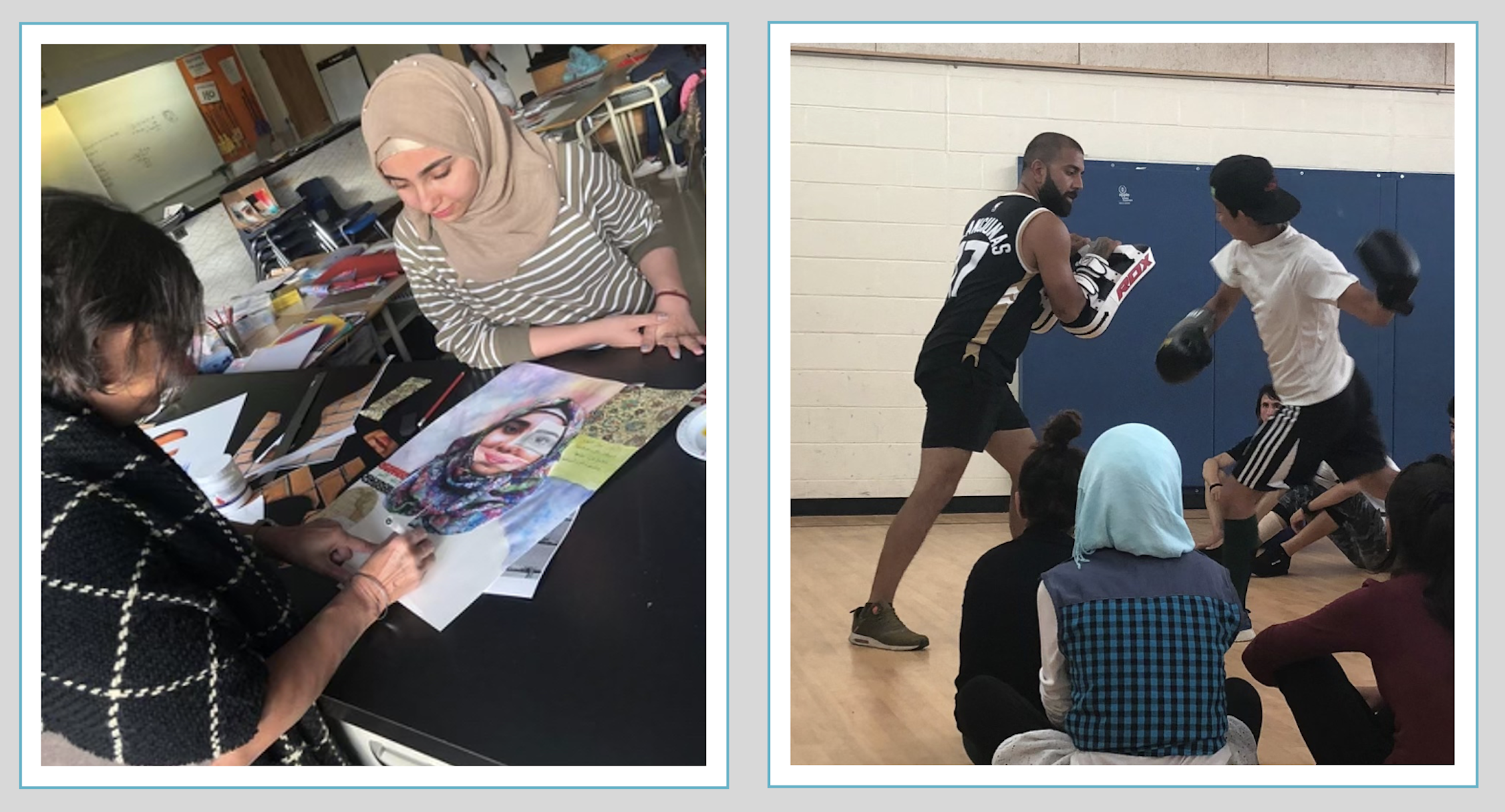
This article focuses on the case study of Mariam, a fictional eldest child based on children we have encountered in our research. Mariam, 14, fled from Syria with both parents and her two younger siblings (aged six and 10). Mariam has the most responsibility in her family and she often accompanies her parents to appointments to help translate.
Our sketch of Mariam is based on a longitudinal study that assessed reading skills and well-being of 122 Syrian refugee children from 73 families in our Multilingualism and Literacy Lab at the Ontario Institute for Studies in Education at the University of Toronto. Forty-two children were aged six to eight; 50 children were aged nine to 11; 30 children were aged 12 to 14.
We learned that the oldest students were the most behind in reading skills in comparison to their English-speaking peers, more so than their younger siblings. The oldest students had the lowest scores and the slowest growth in English vocabulary and reading comprehension when compared to younger refugee children.
Unique burdens
Mariam, as the eldest child in a Syrian refugee family, faces many unique burdens:
- Complex trauma;
- Lowest English language knowledge compared to her peers;
- Highest interrupted education out of her siblings;
- Least time to catch up to her peers before graduation;
- Highest burden to support her family both socially and financially;
- Least resources to support her academic success.
While eldest children in Syrian refugee families face different familial expectations depending on their gender, the ultimate goal is always to support the family. For example, if Mariam were male, she would likely be looking for a job to support her family instead of helping with child care. Despite these differences, the language development and well-being of eldest male or female children is equally affected.
We propose targeted solutions that teachers, school leaders and other educators can rely on to help children like Mariam to better succeed.
Trauma
Children in refugee families, like Mariam, are highly likely to experience and be affected by trauma and mental illness.
The term “triple trauma” explains the unique struggles of trauma that Syrian refugee children experience as they flee Syria, seek refuge at temporary settlements, then adjust to an unfamiliar environment in Canada. Once settled, the trauma of forced migration continues to influence their social integration and academic achievement. Experiencing trauma, especially at a young age, affects brain development. Repeated exposure to reminders of traumatic experiences (triggers) causes the brain to react differently to situations.

Language development
Children learning a new language need one to three years to acquire conversational language, and between five and seven years to acquire academic language. Academic language is topic-specific vocabulary of academic subjects like math or science that children learn in a typical school context.
Mariam, who is 14 and in Grade 9, does not have adequate time to develop academic language before graduation. She will have acquired conversational language, but the lack of English academic language will limit her employment opportunities when she graduates. It is therefore crucial that students like Mariam receive immediate and intensive language support. We often recommend a systematic and explicit approach.
It may seem counterintuitive that Mariam, the oldest child, is the least proficient in learning English. The main reason for this is the high amount of interrupted education Mariam experienced both in Syria and as she migrated to Canada. On average, children have lost three to four years of schooling by the time they arrive in Canada. Furthermore, her younger siblings are closer to the optimal age for language learning (10 and under). The younger children are, the more easily their brains absorb new languages.

Supporting early reading skills
As researchers, we are often asked for the most efficient solution to help refugee students. In other words, what strategy will have the maximum impact? We offer several key research findings .
We know that the biggest predictor of academic success is the development of early reading skills. This is why the Child and Youth Refugee Research Coalition, a countrywide alliance of community partners, academics and government agencies working to promote the successful integration of refugee children, youth and their families, focuses on the development of reading. Recently, studies from this group have found that one of the strongest predictors of reading success is exposure to the English language both in and out of school.
We therefore suggest a variety of flexible activities focused on improving language exposure to English, such as:
- “Book Buddy” programs, where English speakers pair up with students learning the language;
- Access to English media (movies, music, books);
- Lunchtime or after-school activities in English (chess clubs, science programs, yearbook club and so on), bearing in mind that family responsibilities could affect students’ availability;
- Resources for families to use at home (books that siblings can read together).
For teachers, it can be overwhelming to try and help refugee students in all the areas they need support. One study conducted with teachers found that the best suggestion was to build community learning. This means that instead of relying on families for additional support, teachers worked with colleagues and their other students to wrap a system of support around the children who need it the most.

Addressing well-being, racism in curriculum
A complicating factor for these students is the complex trauma they face. While individual counselling can be difficult to implement during school hours, there is new evidence that teacher-implemented, classroom-wide interventions are effective. This innovative study shows that building well-being into the curriculum effectively helps students deal with their trauma.
Refugee children also experience racism. Some research has found that this can be mitigated by providing positive examples of intercultural friendships in the form of stories.
Read more: Celebrating diversity isn't enough: Schools need anti-racist curriculum
Our study finds that Mariam, the oldest child in her family, needs the most urgent support in terms of language development, social integration and mental health. We urge all educators to consider how they can better support students like Mariam in their schools.
Diana Burchell receives funding from the Social Sciences and Humanities Research Council (SSHRC) for her doctoral research.
Becky Xi Chen receives funding from Social Sciences and Humanities Research Council of Canada to conduct research on Syrian refugee children and youth.
Jermeen Baddour works for Human Endeavour as a Program Manager serving immigrant and refugee children and youth.
Redab Al- Janaideh is a project lead at the Social-Emotional Development and Intervention Lab-University of Toronto. She is working on (Supporting Prosociality and Resilience in Newcomer Transitions) project.
